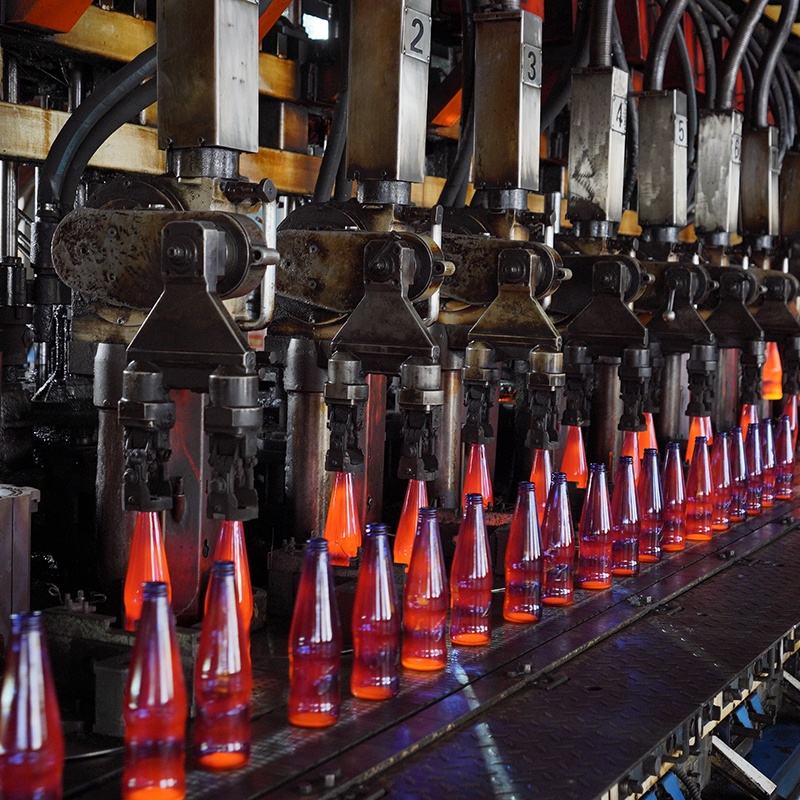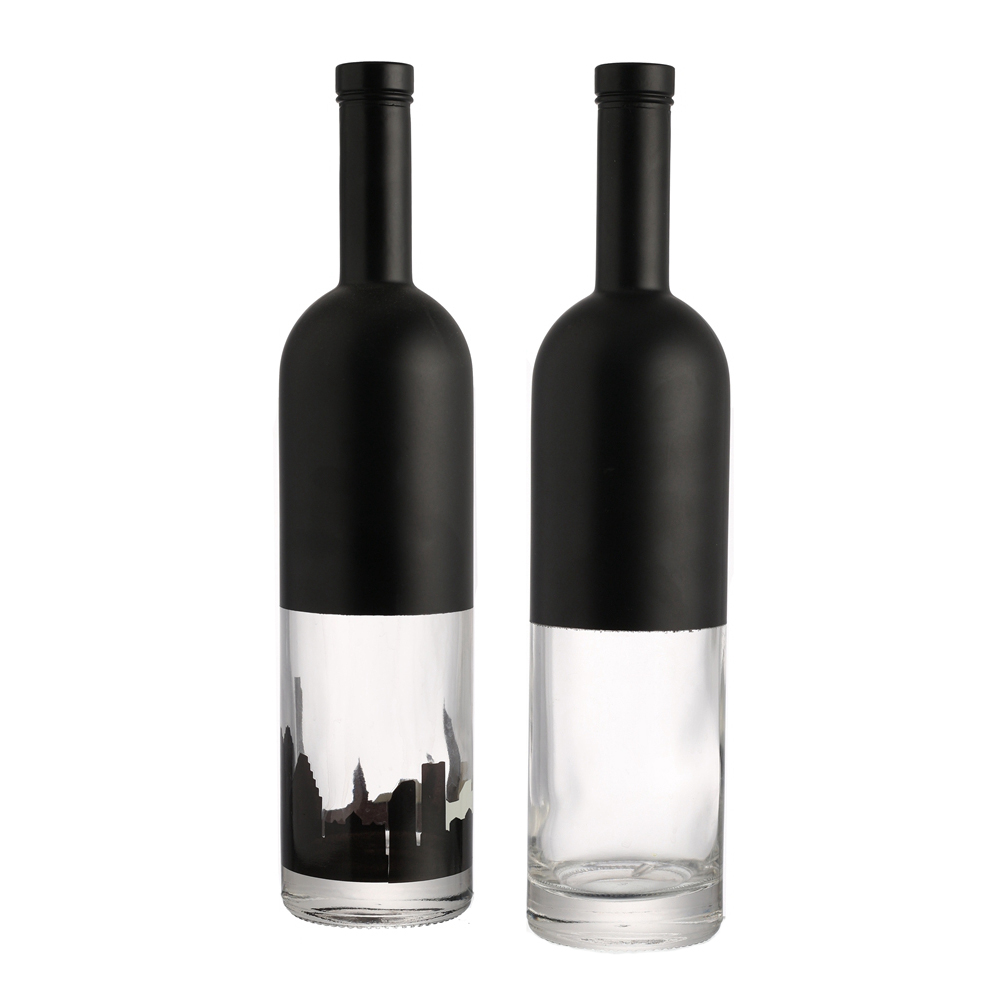Learn the difference between visible and intrinsic defects in food-grade glass bottles, root causes (melt vs. manufacturing), detection methods, and how QLT Glass prevents and corrects these issues for safe, premium packaging.
Glass bottles are a trusted packaging choice for food, beverages and pharmaceuticals because they’re inert, recyclable and premium-looking. Yet defects still occur — some visible to the eye, some hidden and only revealed by testing. Understanding these defects, their root causes and how to prevent them is essential for reliable production and brand protection.
Two axes for classifying defects
1. Visible (appearance) vs. intrinsic (quality) defects
-
Visible defects are those a person can see: bubbles, scratches, rough surfaces, wrinkles, seams, stains, cold spots, bottom deformation, or decorative faults. These affect shelf appeal and perceived quality.
-
Intrinsic defects are not obvious to the eye and require instruments: internal stress (annealing issues), chemical instability, non-uniform composition, or micro-cracks that can cause failures later. These impact safety, shelf life and performance.
2. Melt (batch) defects vs. manufacturing (process) defects
-
Melt defects arise from the glass melt itself: gas bubbles, stones, striae (streaks), devitrification/crystallization and color inhomogeneity. Root causes include impure raw materials, poor fining/refining, furnace atmosphere issues or uneven melting.
-
Manufacturing defects occur during forming, annealing, handling or decoration: warpage, cold seams, shear marks, mold marks, sticking to the mold, imprinting, and damage from poor handling or packaging.
Common defects — what causes them (short list)
-
Bubbles & inclusions: poor fining, contaminated cullet, uneven furnace temperature, or refractory corrosion.
-
Striae / streaks / color bands: incomplete homogenization in the melt, refractory droplets, or local chemical differences.
-
Micro-cracks / crazing: insufficient annealing/uneven cooling or thermal shock during forming.
-
Thickness variation / weak walls: unstable gob delivery, poor mold temperature control, or machine speed mismatch.
-
Wrinkles & folds: improper gob placement or excessive friction between gob and mold.
-
Surface roughness or pitting: corroded mould surfaces, poor lubricants, or oxidation on mold skin.
-
Bottom deformation / conveyor marks: incomplete solidification before ejection, or unsuitable conveyor materials/temperatures.
-
Contamination (stains, residues): dirty line, insufficient washing, or packaging contamination.
Detection & diagnosis — how problems are found
-
Visual inspection (manual & automated): high-speed camera systems detect bubbles, chips, surface defects and cosmetic faults.
-
Optical/laser scanners: measure wall thickness and dimensional tolerances.
-
Polariscopes / stress viewers: reveal internal stress and annealing quality (birefringence).
-
Chemical/ leach testing: verify food-contact safety (heavy metals, migration).
-
Pressure, drop and thermal shock tests: check mechanical integrity and resistance.
-
Root-cause workflow: log defect → map production step/time → sample melt & process data → test, correct, re-verify.
How QLT Glass prevents and handles defects (what most factories do vs. what we do)
Below we contrast common industry practices with QLT Glass’s approach and the benefits to you.
Raw materials & melting
-
Typical approach: Use cullet and batch ingredients with standard cleaning; basic furnace control.
-
QLT approach: Strict incoming raw-material screening, laser/optical cullet sorting, controlled batch recipes and advanced furnace controls with stable homogenization and fining cycles. We monitor furnace atmosphere to avoid redox-driven defects.
-
Benefit: Far fewer bubbles, striae and stones — cleaner melt, more consistent color and fewer rejects.
Forming & molding
-
Typical approach: Reactive maintenance and manual mold changes; variable gob control.
-
QLT approach: Precision gob delivery systems, CNC-maintained molds, automated mold lubrication and scheduled preventive maintenance. Digital mold parameters and real-time monitoring keep mold temperature and timing within tight tolerances.
-
Benefit: Uniform wall thickness, fewer wrinkle/shear defects and consistent bottle geometry for reliable filling and capping.
Annealing & stress control
-
Typical approach: Standard annealing ovens with set timers; occasional stress problems.
-
QLT approach: Zoned, programmable annealing with real-time stress feedback using polariscopes and thermal imaging. Each production lot is validated for residual stress.
-
Benefit: Lower risk of micro-cracks, better drop and thermal shock performance — safer bottles in processing and end-use.
Surface finish & contamination control
-
Typical approach: Routine cleaning and basic finishing inspections.
-
QLT approach: High-grade mold coatings, premium food-grade lubricants, automated wash and inspection lines, and controlled cleanrooms for critical packaging runs.
-
Benefit: Pristine, glossy surfaces that improve shelf appeal and reduce contamination risk.
Quality inspection & traceability
-
Typical approach: Manual sampling and spot checks.
-
QLT approach: Full-line optical inspection (neck, body, base), 100% dimensional sampling, lot-level traceability and documented corrective action records. We test to international standards (SGS/FDA/EU/ISO) for food contact and safety.
-
Benefit: Rapid identification of issues, consistent export-grade quality and regulatory compliance.
Practical prevention checklist (what we recommend)
-
Keep cullet and raw materials clean and consistently graded.
-
Maintain stable furnace temperature and atmosphere; execute proper fining cycles.
-
Use precision gob delivery and maintain mold geometry and surface finish.
-
Implement zoned annealing and stress monitoring.
-
Adopt automated optical inspection and lot traceability.
-
Use appropriate packaging and handling to avoid post-production damage.
Why this matters to brand owners
A lower purchase price is not the same as a lower total cost of ownership. Defective bottles lead to line stoppages, product loss, recalls, reputational damage and higher logistics/returns costs. By choosing a supplier that controls both melt quality and production processes, you reduce risk, improve shelf presentation and protect your brand.
QLT Glass — your partner for defect-free food packaging glass
QLT Glass combines advanced material control, modern furnace technology, precision forming, strict annealing and full-line inspection to minimize both visible and intrinsic defects. We back our products with documented test results and export-grade certifications so you can be confident when filling, shipping and selling.
If you’d like, we can provide:
-
A defect-analysis checklist tailored to your product mix;
-
Sample testing protocols for your filling line;
-
A pilot production run to validate bottle performance under your process conditions.
Post time: Oct-04-2025


